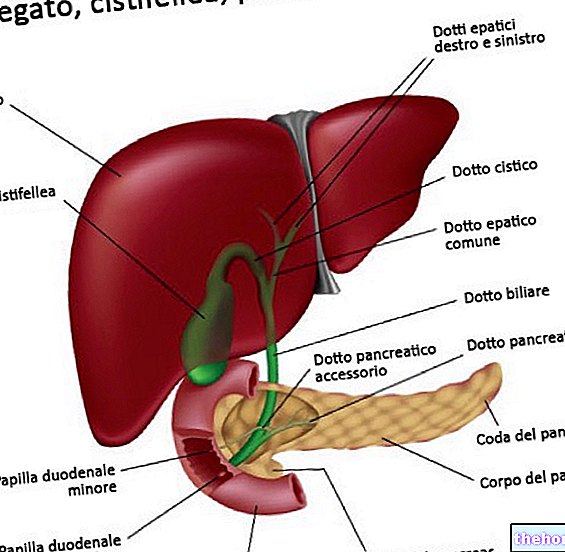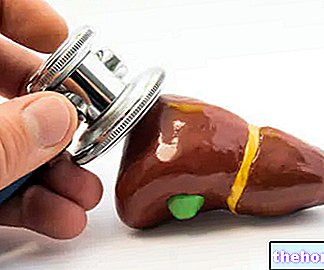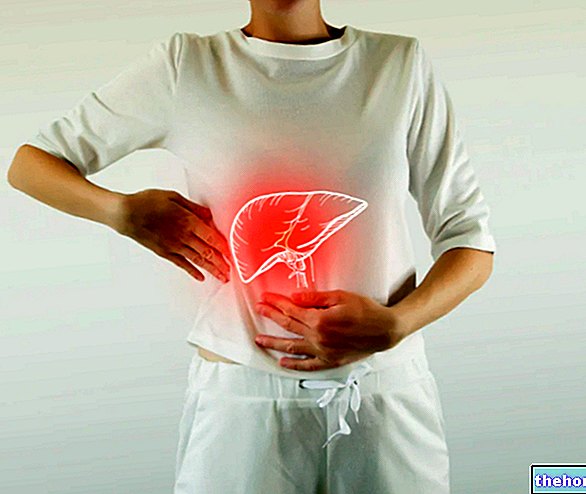Ascites and Peritoneum
L "ascites, from the Greek askos = sac, is a pathological collection of liquids in the abdominal cavity. In healthy individuals, the volume of these fluids is rather small (10-30 ml), and helps the flow of the peritoneal surfaces.

Causes of Ascites
In 75-80% of cases, ascites is related to cirrhosis, a degenerative liver disease in which normal liver tissue is replaced by fibrous (scar) connective tissue. In turn, cirrhosis is very often the long-term complication of viral, autoimmune, alcoholic hepatitis or caused by other substances (drugs, prolonged exposure to toxic agents of various kinds). Ascites appears in 50% of patients with cirrhosis within 10 years of diagnosis; 40% of cirrhotic patients with ascites die within 2 years, while the life expectancy 5 years after diagnosis is 30%. If possible, therefore, the appearance of ascites should be considered for a liver transplant.
Among the possible causes of ascites we also find heart failure (3% of cases), cancers affecting the abdominal organs (colon, liver, stomach, pancreas, ovary) (10%), infectious diseases such as tuberculosis (2%) ), pancreatitis (1%) and more rarely severe forms of intestinal malabsorption or severe malnutrition (Kwashiorkor).
Whatever the origin, ascites is caused by the loss of water and saline balances, with excessive retention of water and sodium by the organism. Presumably the origin of the problem is portal hypertension; remember that the portal vein collects blood from the spleen, and from the subdiaphragmatic portion of the digestive tract, to convey it to the liver; in the presence of a liver disease, such as cirrhosis, the structural alterations of the organ obstruct the blood flow inside the liver, increasing the pressure due to this increase in blood pressure, the amount of blood seized by the spleen increases (which significantly increases in volume → splenomegaly), with a consequent reduction in the amount of circulating blood (hypovolemia).
The activation of the sympathetic system and the renin-angiotensin-aldosterone system in response to hypovolemia increases the amount of sodium and fluids retained in the kidney, while on the other hand the baroreceptors push the heart to increase its frequency and contractility, in addition to stimulating arteriolar vasoconstriction. The whole mechanism feeds portal hypertension, which increases the hydrostatic pressure inside the hepatic sinusoids favoring the transudation of liquids into the peritoneal cavity (ascites).
Finally, hepatic impairment leads to a reduction in protein synthesis, including that relating to albumin; this is the most important plasma protein, which alone is responsible for 80% of the oncotic pressure (colloid-osmotic) of the blood.As such, albumin favors the passage of water from the interstitial fluid to the capillaries; consequently, hypoalbuminemia leads to the formation of edema and ascites due to the accumulation of fluids in the intercellular spaces (although its role in the development of ascites is now considered minority).

Other articles on "Ascites"
- Ascites: Symptoms and Diagnosis
- Ascites: treatment
- Ascites - Medicines for the treatment of Ascites
















.jpg)











